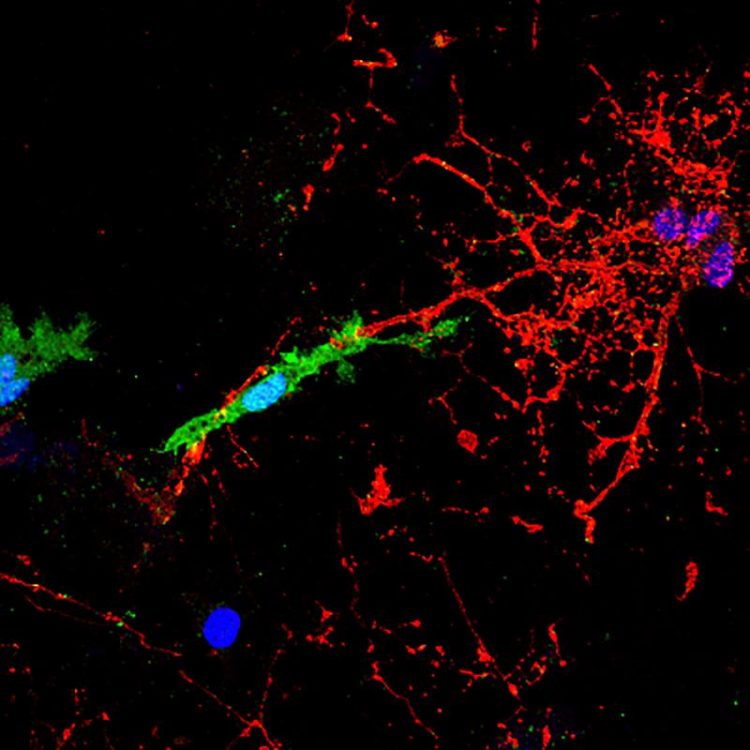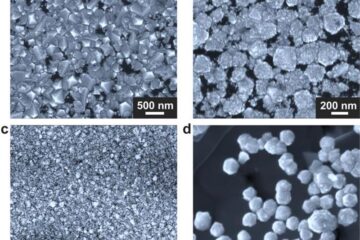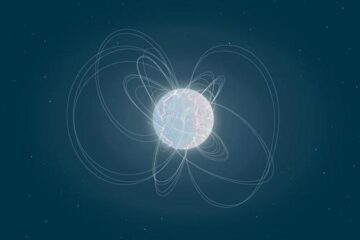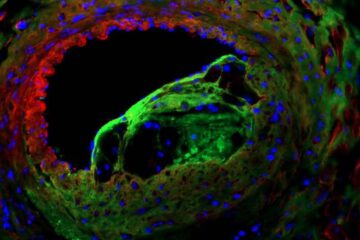Multiple sclerosis: Endogenous retrovirus HERV-W key to nerve tissue damage

A microglial cell (green) contacts and attacks a myelinated axon (red). In the presence of the pHERV-W envelope protein, this interaction leads to axonal injury. The blue structures are cell nuclei. HHU / Joel Gruchot / Patrick Küry
Multiple sclerosis (MS) is an autoimmune disease of the central nervous system (CNS) affecting brain and spinal cord. In collaboration with colleagues from the USA and Canada, a team of Düsseldorf-based researchers led by Prof. Dr. Patrick Küry from the Department of Neurology has discovered a new way in which nerve tissue is damaged by an endogenous retrovirus.
They authors have published their findings in the journal Proceedings of the National Academy of Sciences of the United States of America (PNAS).
Early disease stages of MS are primarily characterised by immune cell infiltration of the CNS. This causes inflammation that damages the so-called myelin sheaths. Myelin sheaths are electrically insulating structures established by specialised glial cells of the CNS, referred to as ‘oligodendrocytes’.
These structures protect, nourish and stabilise axons, which transmit electrical signals between neurons.
There is a large therapeutic repertoire of immunomodulatory drugs available that can effectively target the inflammatory aspects of relapsing multiple sclerosis (RMS). But when MS progresses, damage accumulates which ultimately results in irreversible deficits and clinical disability.
Unfortunately, despite decades of intense research disease progression is still untreatable as there are no therapies available that either prevent damage or repair injured axons.
In a new study published online on June 18 in the renowned journal PNAS a research team led by Prof. Dr. Patrick Küry from the Department of Neurology (chaired by Prof. Dr. Hans-Peter Hartung) has shed light on a novel axon damage mechanism which could be highly relevant for progressive MS (PMS) patients.
As outlined by the first author of this research paper, Dr. David Kremer, the envelope (ENV) protein of the pathogenic human endogenous retrovirus type W (pHERV-W) was found to be a major contributor to nerve damage in MS.
In collaboration with research teams in Cleveland (OH, USA) and Montreal (CAN) the authors demonstrated that the ENV protein drives CNS resident microglial cells to contact and damage myelinated axons.
Alongside the scientific research into determining how the damage mechanism works, clinical developments aiming at neutralising the harmful ENV protein in MS patients have also progressed.
Two clinical studies conducted under the supervision of Prof. Hartung have already successfully tested the ENV-neutralising antibody temelimab. MRI scans of the participants treated in the study showed reduced damage to the nerve tissue.
The Düsseldorf-based researchers and their colleagues can therefore explain why neurodegeneration is decreased in patients treated with temelimab. This antibody specifically binds to the ENV protein of the retrovirus and blocks its activity in the CNS.
As stated by Prof. Hartung, future clinical studies in progressive MS patients will now have to demonstrate whether temelimab treatment can also improve clinical symptoms resulting from neurodegeneration.
Kremer D, Gruchot J, Weyers V, Oldemeier L, Göttle P, Healy L, Ho Jang J, Kang T Xu Y, Volsko C, Dutta R, Trapp BD, Perron H, Hartung HP, Küry P., pHERV-W envelope protein fuels microglial cell-dependent damage of myelinated axons in multiple sclerosis, Proc. Natl. Acad. Sci. U. S. A. 2019 Jun 18. pii: 201901283
DOI: 10.1073/pnas.1901283116
Media Contact
More Information:
http://www.hhu.de/All latest news from the category: Life Sciences and Chemistry
Articles and reports from the Life Sciences and chemistry area deal with applied and basic research into modern biology, chemistry and human medicine.
Valuable information can be found on a range of life sciences fields including bacteriology, biochemistry, bionics, bioinformatics, biophysics, biotechnology, genetics, geobotany, human biology, marine biology, microbiology, molecular biology, cellular biology, zoology, bioinorganic chemistry, microchemistry and environmental chemistry.
Newest articles

Making diamonds at ambient pressure
Scientists develop novel liquid metal alloy system to synthesize diamond under moderate conditions. Did you know that 99% of synthetic diamonds are currently produced using high-pressure and high-temperature (HPHT) methods?[2]…

Eruption of mega-magnetic star lights up nearby galaxy
Thanks to ESA satellites, an international team including UNIGE researchers has detected a giant eruption coming from a magnetar, an extremely magnetic neutron star. While ESA’s satellite INTEGRAL was observing…

Solving the riddle of the sphingolipids in coronary artery disease
Weill Cornell Medicine investigators have uncovered a way to unleash in blood vessels the protective effects of a type of fat-related molecule known as a sphingolipid, suggesting a promising new…





















